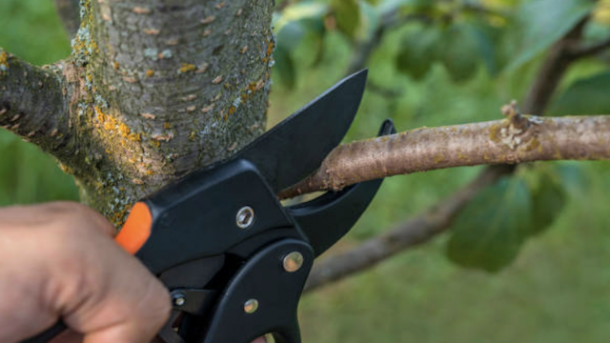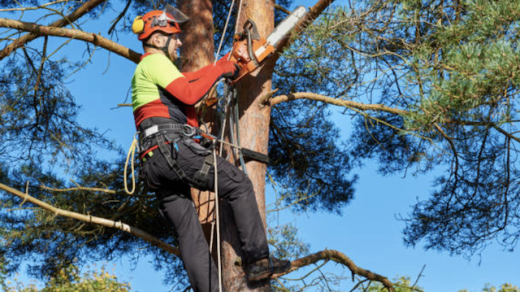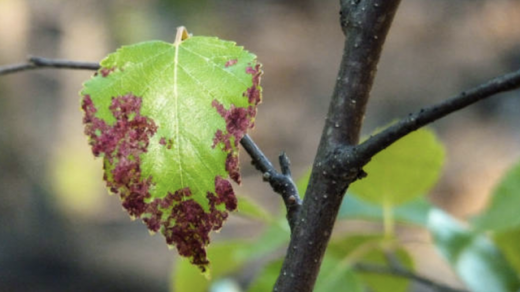Tree pruning in Illinois is an important landscaping service that can beautify and reinforce your trees so they are able to withstand insects, diseases and inclement weather – and look good while doing it!
Pruning must be completed if you want healthy trees, but it needs to be done properly by someone who has experience in what they’re doing. Like a certified arborist from IL Tree Trimming. You may be able to prune trees safely while they are still small, but you also may be doing irreparable harm to the tree.
To correctly prune trees, you should know all of the following:
- When is the best time to prune your types of trees
- How much of the tree can be pruned at at once
- Where to cut the branches so you do not harm the tree
Cutting too much from a tree might kill it or result in structural damage, but minimal pruning done every year benefits trees in a lot of ways. Professional pruning improves the appearance of trees, makes them healthier, eliminates dying or diseased limbs and increases fruit or flower production.
For the best results, pruning must be performed each year, but as trees mature, you may be able to go two years between major pruning services. Regardless of how routinely you have your trees pruned, ensure your arborist is qualified to do the type of tree pruning your trees need. This won’t be a problem if you call IL Tree Trimming in Illinois!
Types of Tree Pruning Methods
There are 7 different ways to properly prune a tree so that it grows healthier and stronger each year.
Depending on the shape, type and health concerns of your trees, one pruning method might be more beneficial than another, but each technique has distinct benefits to consider.
Crown Thinning Your Trees
Crown thinning is typical for larger, overgrown trees in Illinois. This process eliminates weak branches within the crown of the tree to improve sunlight and air flow throughout the crown. Air flow is especially important for disease prevention.
This tree pruning technique also eliminates branches that are touching so they do not rub against each other and snap or cause weaker areas that can be an entry point for insects and pests. Limbs that grow at strange angles are typically removed during crown thinning.
Crown Raising Your Trees
This tree trimming technique removes branches and limbs at the lower part of the crown so limbs start higher up on the trunk. Letting low branches get too large makes them hard to cut off, and they can draw nutrients away from the top of the tree, which leads to less fruit and a weaker tree.
There are several reasons you may decide to raise the crown of a tree. Frequently, it is done to clear the line of sight for automobiles and pedestrians, but it can be done to increase space for landscaping under the tree.
It is a common technique for overgrown trees that are close to homes and other buildings.
Crown Reduction
Crown reduction reduces the total size of the crown from its exterior edge. It shortens limbs vertically and horizontally to maintain the tree at a manageable size. By lowering the crown size, you can remove the need to cut the tree down because it won’t come into contact with traffic lights, power lines or street lights.
Even when the tree isn’t close to structures like those listed above, crown reduction can help the tree look much better because it eliminates irregular growth. This is a good solution for trees that are different ages but are supposed to look uniform.
Crown Cleaning
Sometimes known as deadwood pruning, crown cleaning is a minimally invasive tree trimming method that gets rid of dead, broken or diseased limbs so that the remaining sections of the tree will continue to grow normally. These limbs can only create issues later.
Crown cleaning makes the tree look much better, and it stops limbs from rubbing together. It is also a safety practice that reduces the likelihood of falling branches, because healthy branches do not usually fall.
Crown Restoration
Crown restoration is an intense trimming technique used on trees that were significantly damaged (either by weather or vandals). It must only be done by an experienced arborist who knows how the tree is likely to grow in the future and how long it’s restoration is going to take.
Unlike most other tree trimming services, crown restoration occurs during a longer time period with conservative pruning that reshapes the tree. Your arborist should have a plan to restore the tree, but also must be flexible as the tree grows and reshapes on its own, working with the tree’s new growth.
Vista Pruning
If you are hoping for trees to add to the overall beauty of your landscaping, you are probably interested in vista pruning. The goal of vista pruning is to make the tree more visually pleasing from a particular vantage point.
It encompasses many tree trimming techniques including crown thinning, crown cleaning and crown reduction – anything that makes the trees look more attractive. Remember, though, that an arborist will never compromise the health of a tree, so the primary focus of vista pruning is still to maintain strong, healthy trees.
Espalier Pruning
Espaliered trees are heavily pruned to grow flat against a wall or a trellis. It is a different style of pruning that will attract a lot of attention to your yard. Espalier pruning should be started when the tree is young and then continued very routinely throughout the tree’s life span.
of espalier pruning include facilitating maximum sunlight to reach the trees, as well as making it much easier to produce fruit.
Professional Tree Pruning in Illinois
Tree trimming can be harmful to a tree, your landscaping, and, of course, for you! IL Tree Trimming highly recommends professional tree pruning over DIY.
Besides the many possible dangers of tree trimming, you can do a lot of damage to a tree if you don’t prune it correctly. Over-pruning is one of the most common errors made by homeowners trimming their own trees.
Trees in Illinois that get routine care from a professional are much better off, and hiring an experienced arborist from IL Tree Trimming to prune the trees on your property is a choice you won’t regret. Locate your city in our service area. We work with arborists throughout the entire state of Illinois!







